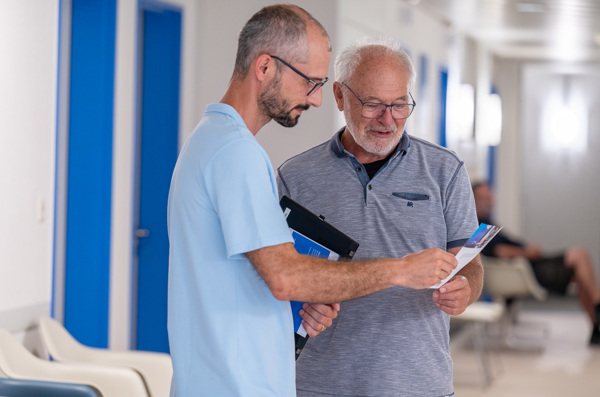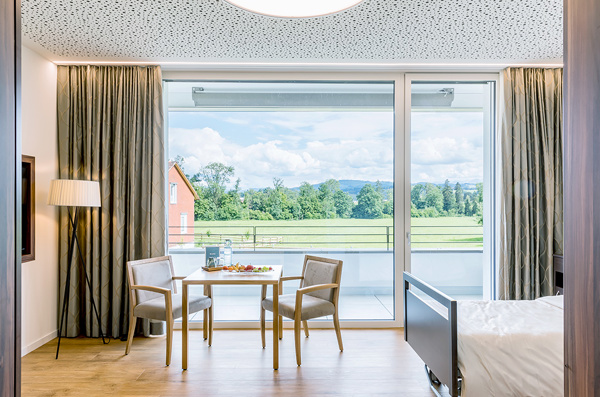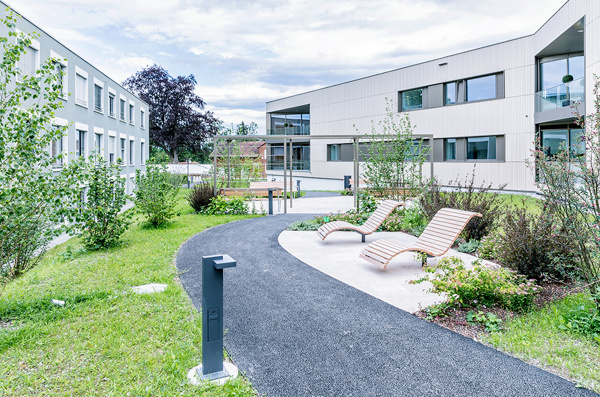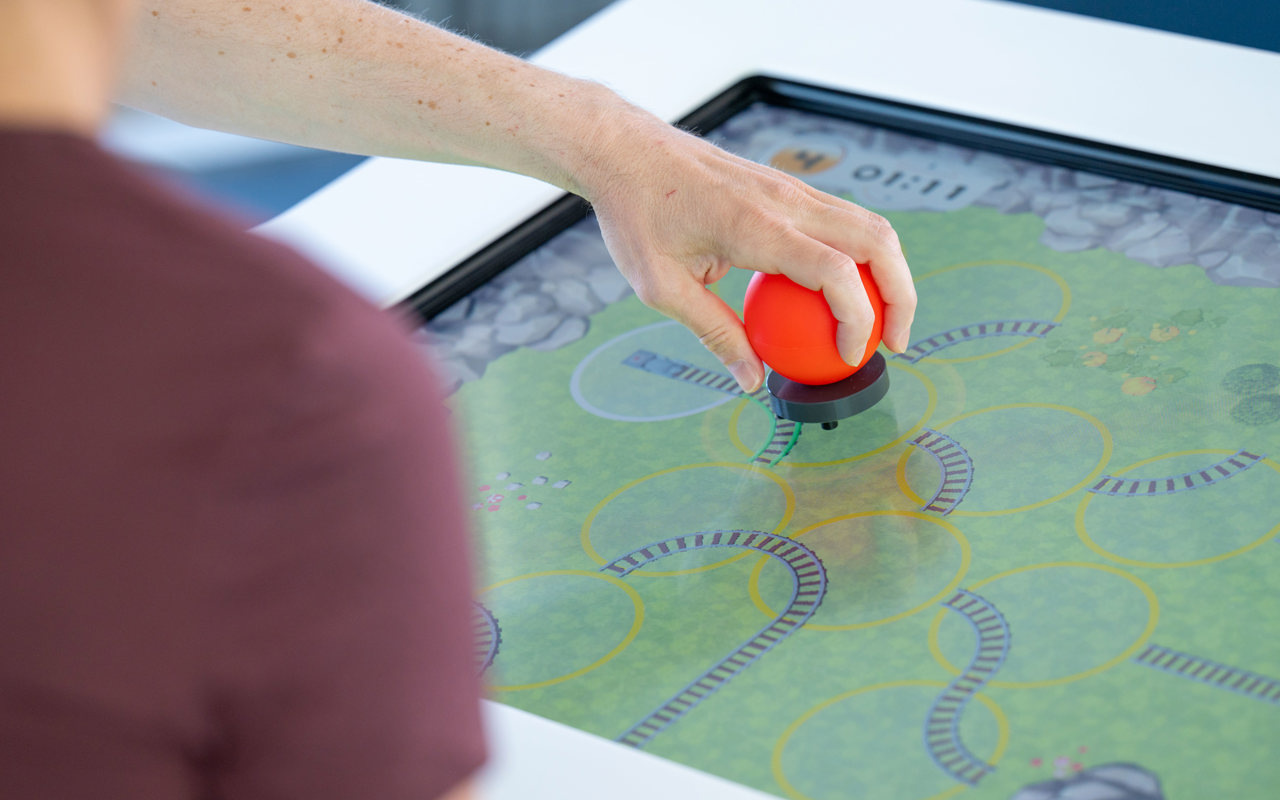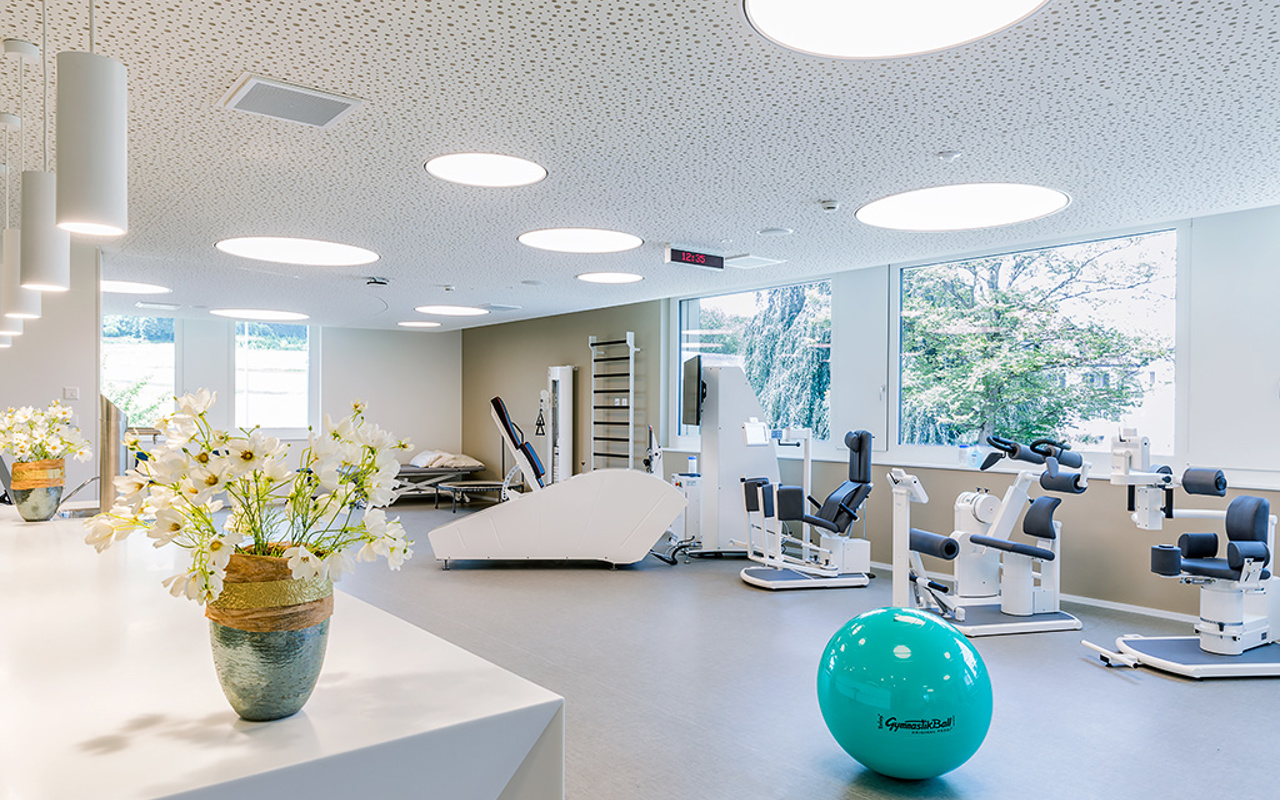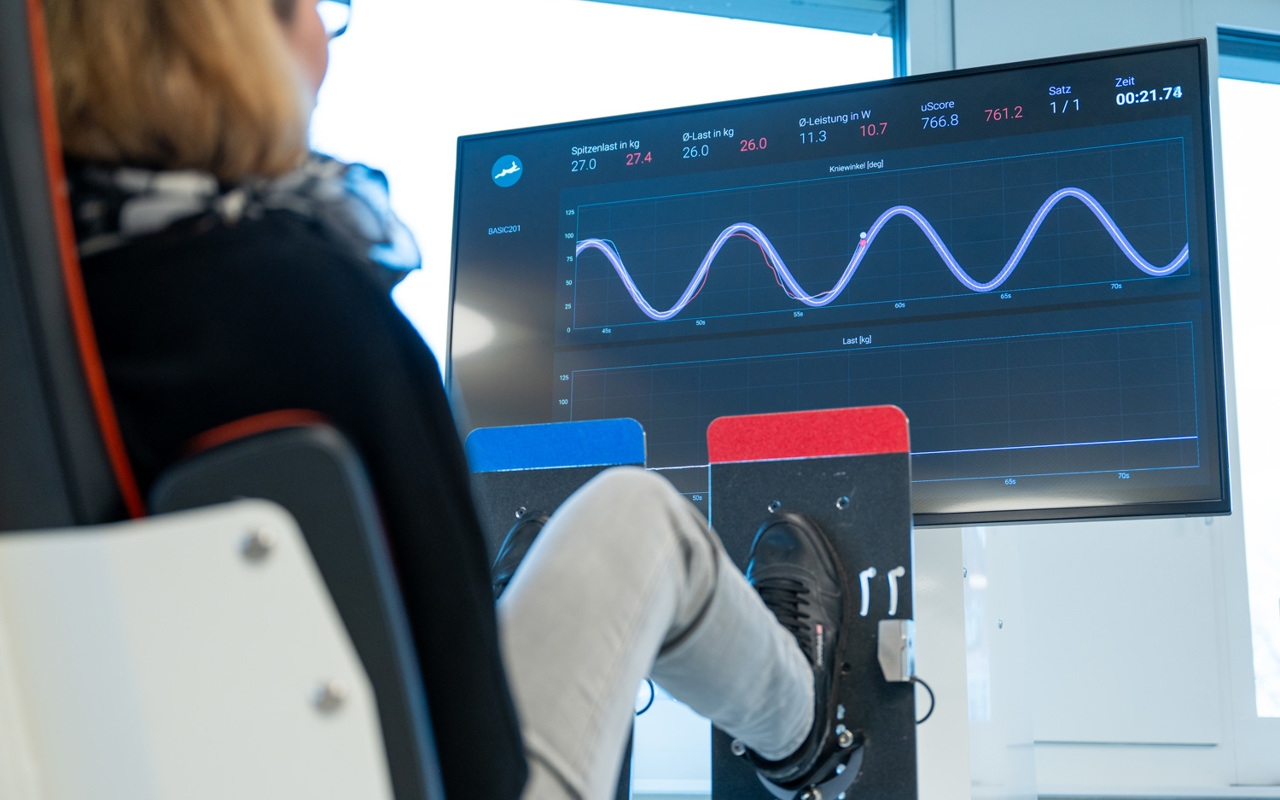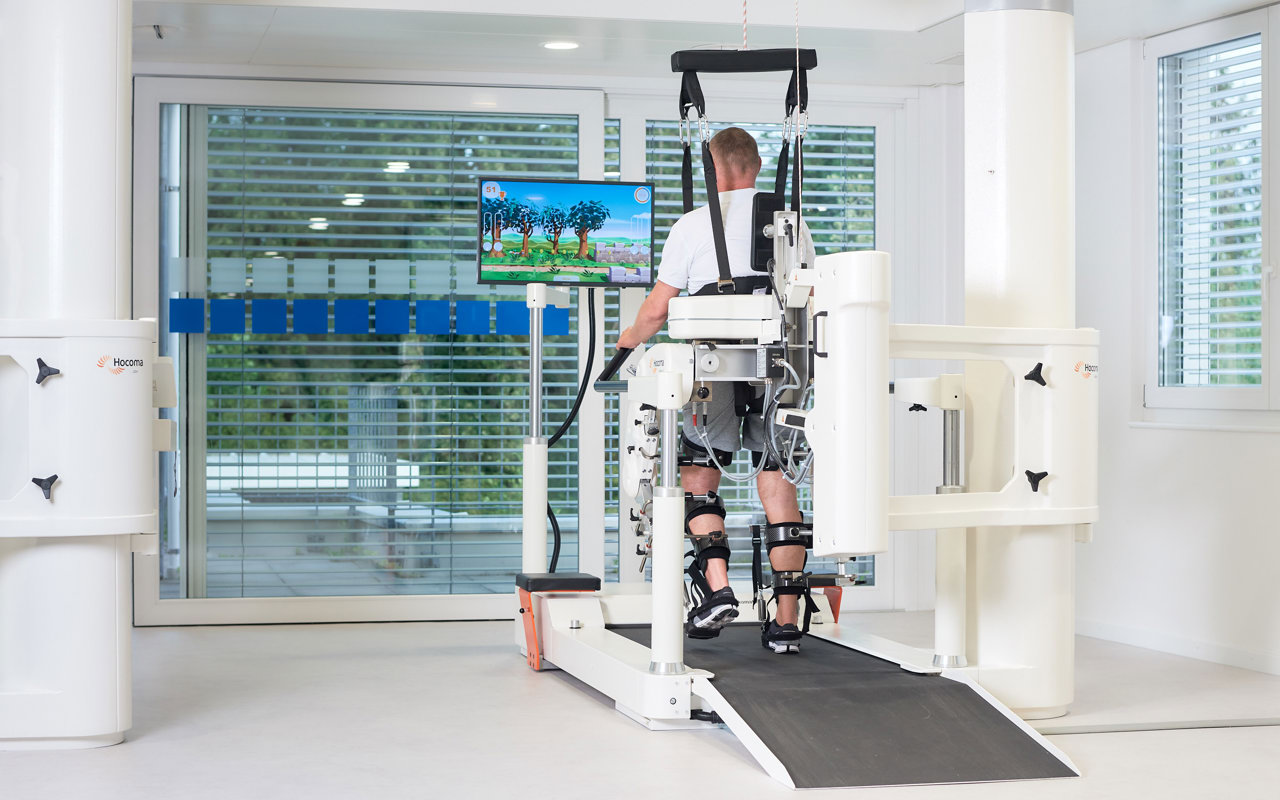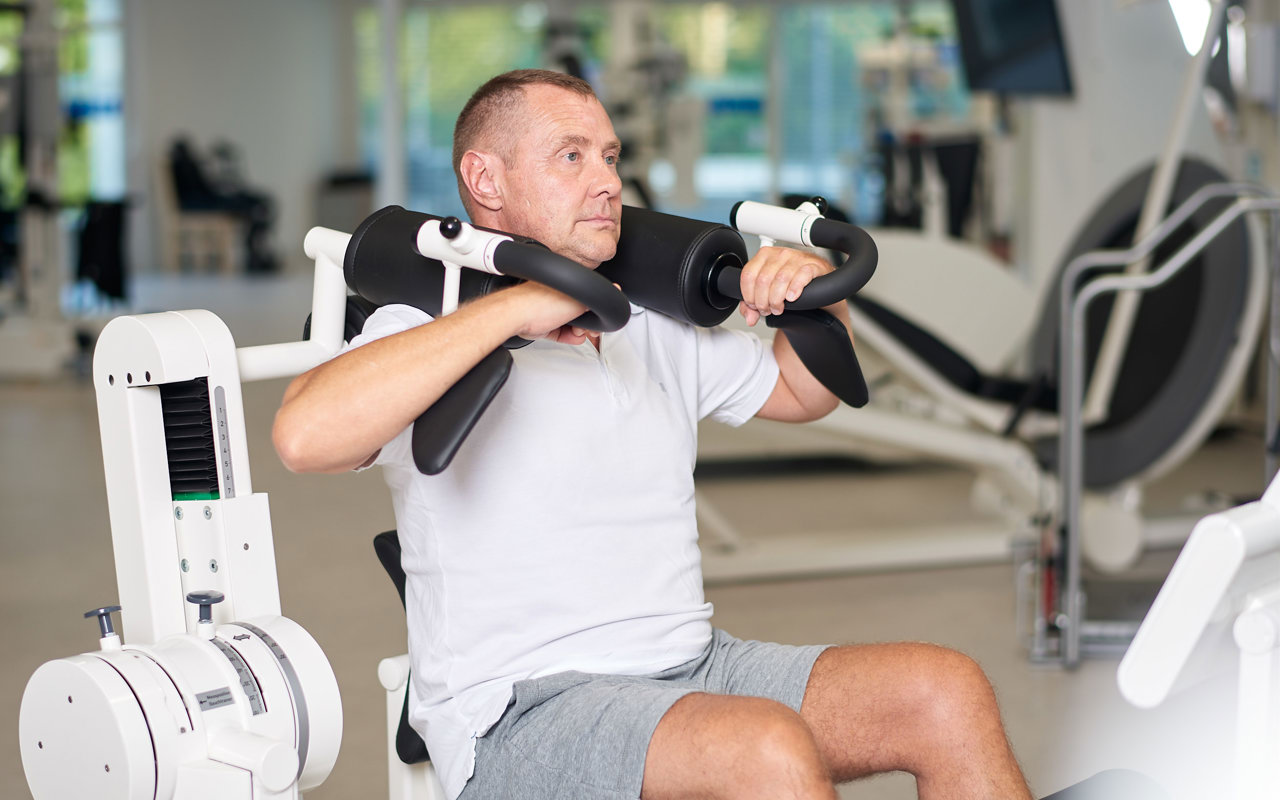Robotics Center
At the Rehaklinik Zihlschlacht, we believe that state-of-the-art technology using robotic and sensor-based training devices can create optimal training conditions for our patients. Various types of rehabilitation technology, especially robot-assisted therapy methods, have already established themselves as the standard in neurological rehabilitation.
Robot-assisted therapy devices and systems allow our patients to begin specific therapies, especially gait therapy, much earlier and in a highly repetitive manner that supports motor learning and stimulates neural reorganization. Numerous studies have shown that the earliest possible use of such devices after stroke and other neurological disorders improves patients' chances of remission.


